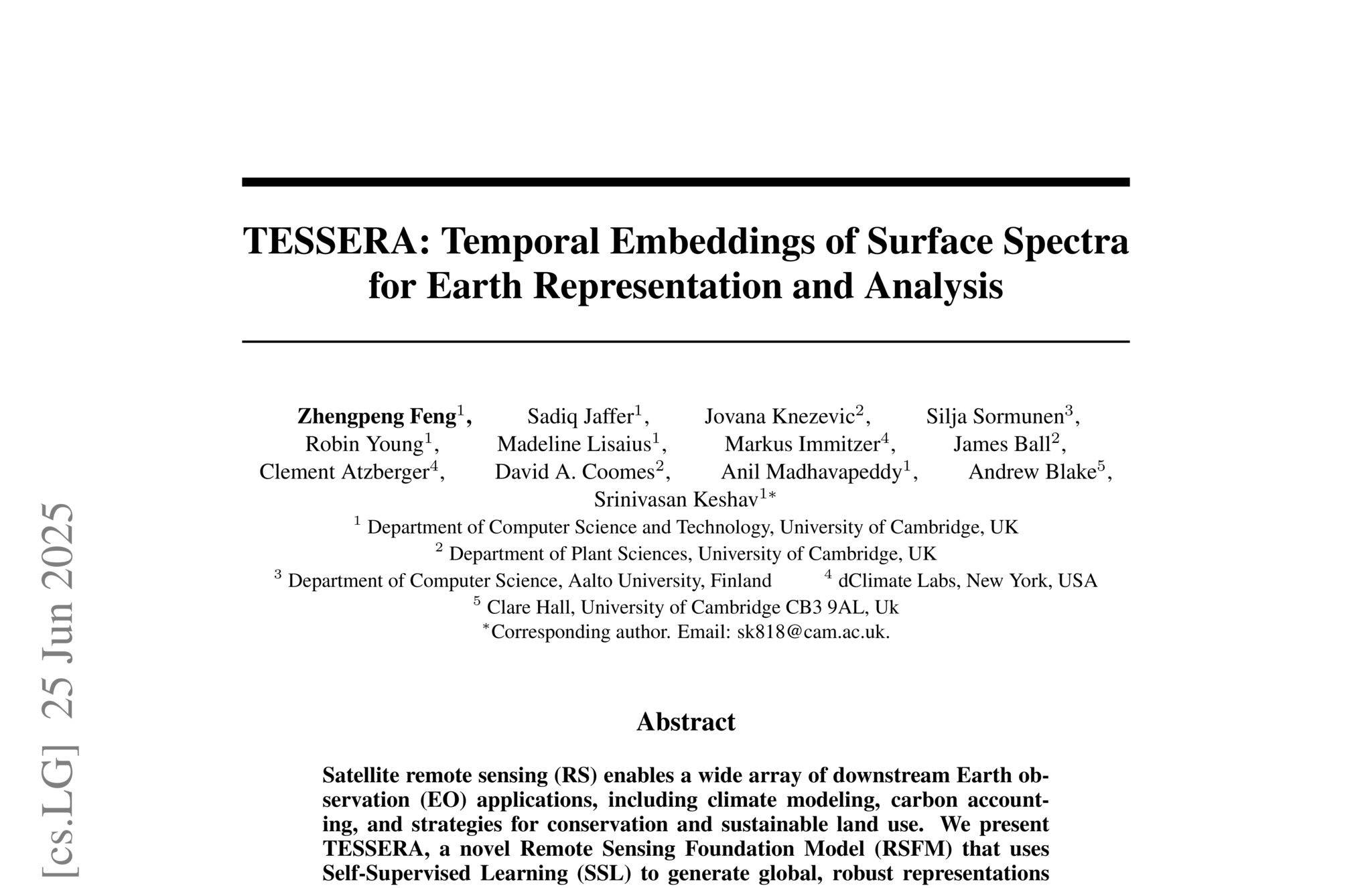TESSERA: Temporal Embeddings of Surface Spectra for Earth Representation and Analysis
Frank Feng, Clement Atzberger, Sadiq Jaffer, Jovana Knezevic, Silja Sormunen, Robin Young, Madeline Lisaius, Markus Immitzer, Toby Jackson, James G. C. Ball, David Coomes, Anil Madhavapeddy, Andrew Blake, and Srinivasan Keshav.
Working paper at arXiv.
Satellite Earth-observation (EO) time series in the optical and microwave ranges of the electromagnetic spectrum are often irregular due to orbital patterns and cloud obstruction. Compositing addresses these issues but loses information with respect to vegetation phenology, which is critical for many downstream tasks.
Instead, we present TESSERA, a pixel-wise foundation model for multi-modal (Sentinel-1/2) EO time series that learns robust, label-efficient embeddings. During model training, TESSERA uses Barlow Twins and sparse random temporal sampling to enforce invariance to the selection of valid observations. We employ two key regularizers: global shuffling to decorrelate spatial neighborhoods and mix-based regulation to improve invariance under extreme sparsity.
We find that for diverse classification, segmentation, and regression tasks, TESSERA embeddings deliver state-of-the-art accuracy with high label efficiency, often requiring only a small task head and minimal computation. To democratize access, adhere to FAIR principles, and simplify use, we release global, annual, 10m, pixel-wise int8 embeddings together with open weights/code and lightweight adaptation heads, thus providing practical tooling for large-scale retrieval and inference at planetary scale.
The model training/inference code, downstream task code, and pre-generated embeddings can be accessed at https://github.com/ucam-eo
Older versions
There are earlier revisions of this paper available below for historical reasons. Please cite the latest version of the paper above instead of these.
This is v3 of the publication from Jul 2025.
TESSERA: Temporal Embeddings of Surface Spectra for Earth Representation and Analysis
Frank Feng, Clement Atzberger, Sadiq Jaffer, Jovana Knezevic, Silja Sormunen, Robin Young, Madeline Lisaius, Markus Immitzer, David Coomes, Anil Madhavapeddy, Andrew Blake, and Srinivasan Keshav.
Working paper at arXiv.
This is v1 of the publication from Jun 2025.
TESSERA: Temporal Embeddings of Surface Spectra for Earth Representation and Analysis
Frank Feng, Sadiq Jaffer, Jovana Knezevic, Silja Sormunen, Robin Young, Madeline Lisaius, Markus Immitzer, James G. C. Ball, Clement Atzberger, David Coomes, Anil Madhavapeddy, Andrew Blake, and Srinivasan Keshav.
Working paper at arXiv.
